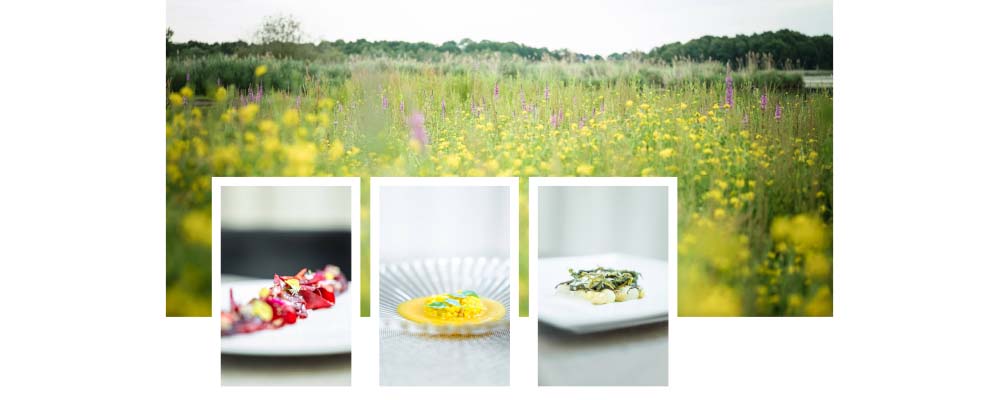Give easy ways to keep your new years resolutions: Indulge yourself with sustainable fine dining

The mid-winter days are short, and the temperature is low. At least here in Europe it is. Nature is taking a break to restore and re-energise. Slowly but surely the days will lengthen again and in a couple of months foragers will rejoice in the first fragile wild garlic and Alexandre buds. That is the beauty of the seasons. There is always something new to look forward to, every year again.
First of January arrived with typical new year’s resolutions. Have you committed to dry January? Or maybe Veganuary: cooking vegan for 31 days? And, are you still keeping up the challenge? Well done, you deserve to go a bit easier on yourself the rest of the year by working on your ‘eating out’ habits. Visit fine dining pioneers from the We’re Smart green guide and practise the following five habits:
1
Order the ‘vegetable’ or pure plant menu
Have a look at the recently published lists for best vegetable restaurant per country. Most of them are ‘normal’ gastronomic highlights. Led by ground-breaking chefs who create dishes with pure plants as a starting point. Of course, you can choose a traditional dish you are very familiar with. Same old same old. But with the pure plant menu you discover new flavours in the safe hands of a great chef. The other diners will be jealous, and you make a positive contribution to the planet.
2
Eat with the ebb and flow of the seasons
Chefs with a green heart embrace the whims of nature. Their menu showcases ‘nature’s’ first, like the girolles or Jerusalem artichokes. That means you are in for a treat, because ‘in season’ means fresh, ripe, succulent, with enough sugar and flavour to get a leading role. Without having to tinker with ingredients to create flavour.
How do you know what is ‘seasonal?”. Impossible to learn in supermarkets with their all-year-round supply of blueberries, brussels sprouts and green asparagus. Flown in from faraway places… Better to pick a skilled chef who tells you where you are and in which season, with the dishes he or she serves.
3
Go local for more diversity
This year choose chefs that use local ingredients and ‘traditional’ recipes, created in new ways. This introduces more variety in ingredients in your diet. And we need that, the global food supply relies heavily on a limited number of staple foods. Although, historically, more than 6,000 plant species have been cultivated for food, less than 200 currently make substantial contributions to global food production, and just nine plants account for two-thirds of total crop production. Eating more diverse improves food security and insect life. It also is connceted to a more varied and nutrient rich diet.
4
Transparency for those that have nothing to hide.
Chefs who have nothing to hide are chefs that care. Care for flavour, for creativity ánd for animal well-being and health. Cooking in open kitchens, displaying the name of suppliers, explaining about the living circumstances of the meat you are about to eat are ways to improve our agricultural practises. All that allows you to make a difference by choosing a conscious restaurant.
5
Applaud for a No
Finally, a new habit that may feel strange. It is applauding the waiter who tells you that a dish is sold out. Or thanking a host who regretfully tells you that there are no more bites when you arrive an hour late. Those who say “no” should be seen as hero. Since they are brave enough to only serve just enough and not have a stack for ‘you never know’. Because that reserve increases costs for the restaurants in ingredients and wages and ultimately in waste. Accepting No as a customer reduces CO2.














